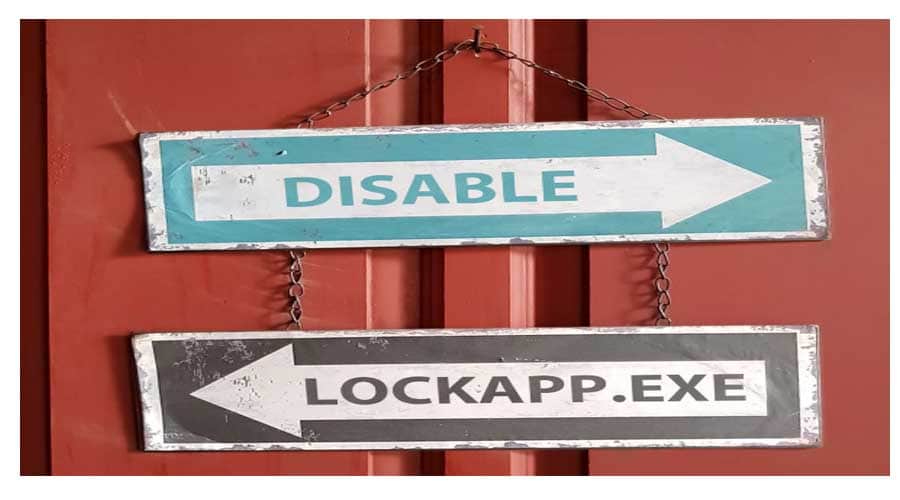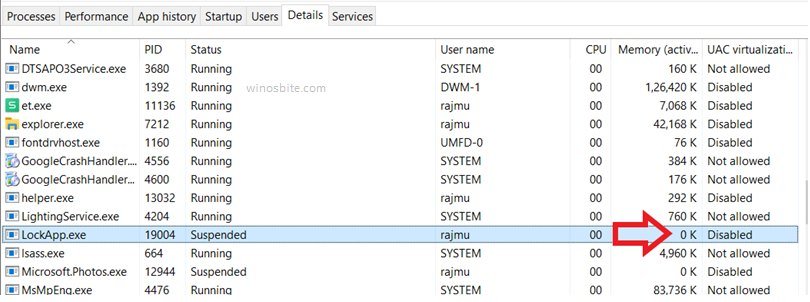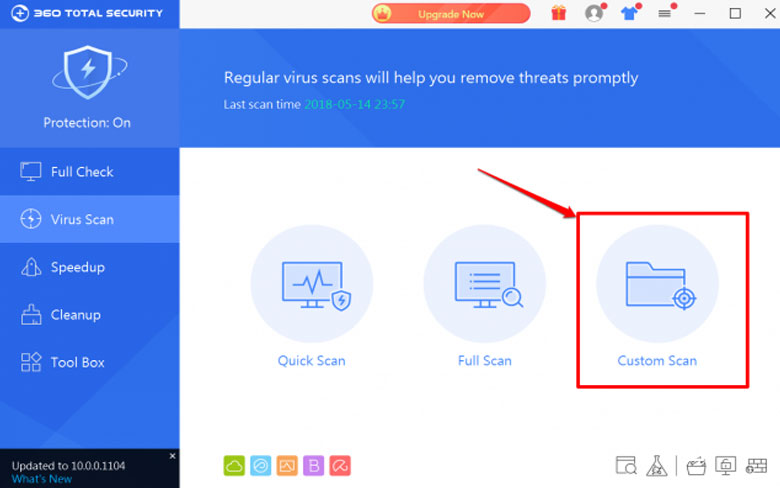

Windows will certainly open up a File Explorer home window. Right-click it and also select “Open File Location.”

To inspect your LockApp.exe process, open up the Task Manager, click the Details tab, and also find LockApp.exe in the listing. Destructive programs simulate to imitate legit system refines to assimilate. We have not seen any records of infections or various other malware impersonating the LockApp.exe procedure, although that’s always possible. You’ll still see the typical background picture on the sign-in screen. It will certainly let you authorize right into your COMPUTER a little bit more quickly, yet you will not see that lock screen any longer. We last checked it on Windows 10’s April 2018 upgrade.ĭisabling the lock app won’t save a recognizable quantity of your COMPUTER’s resources.
LOCKAPP EXE PC
However, the pc registry hack works better. We’ve explored relabeling the lock application data to stop Windows from releasing it. Utilize this pc registry hack to disable the lock display on Windows 10. In other words, when you boot, wake, or secure your PC, you’ll see the normal sign-in timely without the very first empty lock screen. This will certainly eliminate the lock screen from Window’s. You can disable the lock application if you are such as. If it does seem using a great deal of CPU, memory, or other sources, you’ve experienced a substantial insect in Windows. This process is developed to be lightweight, as well as little. You’ll see these details on the Details tab in the Task Manager. After we checked in, LockApp.exe suspended itself and also used just a little 48 K well worth of memory. CPU usage was really reduced, as the app doesn’t require to do a lot. We noticed the lock application made use of only 10-12 MEGABYTES of memory at the lock display. And also, after you sign in to your COMPUTER, the lock app automatically suspends itself. The COMPUTER was sitting at the lock display, so LockApp.exe was running.

If a system device informs you that it’s been running for a long period of time, that implies your COMPUTER was locked and awake for a very long time.

The lock application does not use a lot of system resources. You typically won’t see it at all in this checklist, although some system devices may notify you that LockApplication.exe has been running on your computer. In fact, we could just obtain a screenshot of LockApp.exe working on the Processes tab in the Task Manager by using a geeky method to launch programs on the Windows login screen. It suspends itself and quits working after you check-in. This shows up when you’re signing right into your PC or if you lock your COMPUTER by clicking the “Lock” alternative in the Start food selection or pushing Windows+ L. It only does something when you are at the lock display. This process isn’t doing any type of job most of the moment. For instance, you can show weather forecasts or details concerning new e-mails below. This screen shows a quite background image, the moment and also date, and also any other “fast standing” things you’ve chosen to show on your lock screen. Specifically, LockApp.exe reveals the lock display overlay that appears before you authorize right into your PC. Do not recognize what those services are? Better start reviewing! What is LockApp.exe?
LOCKAPP EXE SERIES
This article becomes part of our recurring series describing numerous procedures found in Task Manager, like Runtime Broker, svchost.exe, dwm.exe, ctfmon.exe, rundll32.exe, Adobe_Updater. In this article, you can know about lockapp.exe here are the details below


 0 kommentar(er)
0 kommentar(er)
